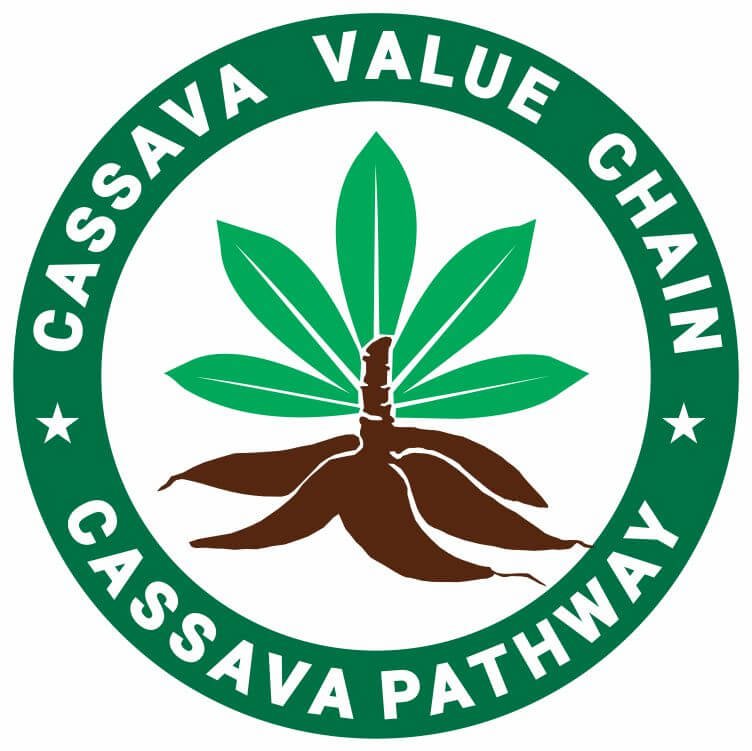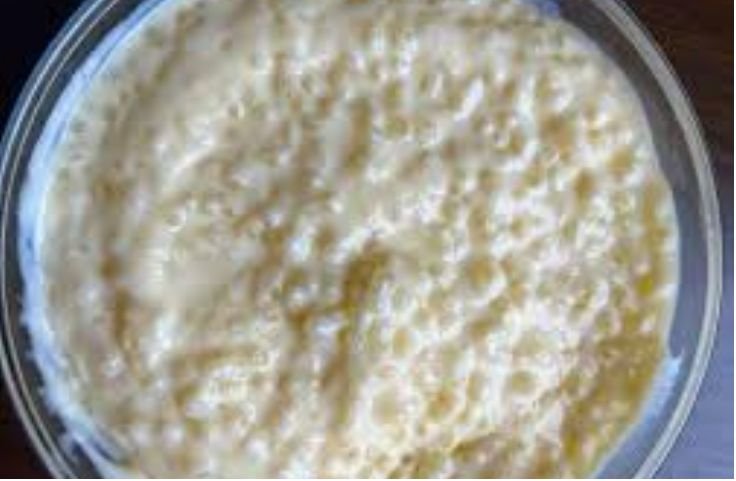Indulge in dairy-free tapioca pudding, a creamy, comforting dessert that keeps the classic texture and sweetness without any dairy ingredients.
For many people, dairy-free desserts are more than a trend; they’re a necessity.
Lactose intolerance, vegan diets, and food allergies have made finding satisfying alternatives to traditional milk-based treats essential.
Dairy-free tapioca pudding meets this need perfectly.
It keeps the smooth, creamy texture and comforting taste of the original while using non-dairy options like coconut milk, almond milk, or soy milk.
This makes it suitable for those avoiding lactose or animal-derived ingredients without losing flavor or richness.
Whether you want a light snack or a soothing dessert, dairy-free tapioca pudding delivers a delicious balance of simplicity and comfort that everyone can enjoy.
Recommended: Vegan Tapioca Pudding Recipe
Table of Contents
- An Overview of Tapioca Pudding
- Why Choose a Dairy-Free Version?
- Best Dairy-Free Milk Alternatives
- Ingredients Needed for Dairy-Free Tapioca Pudding
- Step-by-Step Instructions
- Variations and Toppings
- Storage and Shelf Life of Dairy-Free Tapioca Pudding
- Conclusion
- Frequently Asked Questions
An Overview of Tapioca Pudding
Tapioca pudding is a creamy dessert known for its unique texture and gentle sweetness.
The main ingredients are tapioca pearls, milk, and sugar.
Tapioca pearls, made from the cassava root, swell and turn translucent when cooked, giving the pudding its signature chewy yet smooth texture.
Traditional recipes simmer the pearls in milk with sugar, sometimes adding flavors like vanilla or cocoa for extra depth.
Why Choose a Dairy-Free Version?
Switching to dairy-free desserts lets you enjoy familiar treats while avoiding discomfort from lactose intolerance.
You can still savor creamy textures and sweet flavors without milk, making desserts like tapioca pudding easy to enjoy without digestive issues or restrictions.
Lactose Intolerance
If you have trouble digesting dairy, choosing a dairy-free version protects your stomach.
Tapioca pudding made with coconut or almond milk keeps the creaminess you enjoy while preventing bloating, cramps, or other digestive discomfort. You can indulge in dessert without worry or compromise on taste.
Dairy Allergies
Dairy allergies can cause serious reactions, so avoiding milk is safer.
Dairy-free alternatives provide delicious options like tapioca pudding that maintain flavor and texture, allowing you to enjoy dessert safely while protecting your health and avoiding allergic responses.
Ethical Choices
Some people avoid dairy because of animal welfare concerns.
Plant-based desserts like dairy-free tapioca pudding let you enjoy a classic treat while supporting cruelty-free choices.
This approach aligns your diet with values that prioritize compassion and ethical consumption.
Health Benefits
Removing dairy may help improve digestion and reduce inflammation.
Many notice clearer skin and less bloating when they switch.
Dairy-free tapioca pudding gives you a comforting dessert that can fit into a healthier routine without sacrificing taste.
Related Posts
Recipe for Brazilian Tapioca Crepes
Is Chocolate Tapioca Pudding Healthy?
Quick and Easy Mango Tapioca Pudding
Is Tapioca Pudding Good for Diabetics?
Best Dairy-Free Milk Alternatives
Choosing the right milk matters when making dairy-free tapioca pudding.
The texture and flavor of your pudding can change depending on the milk you use.
Coconut, almond, oat, and soy milk are common options that give creamy, delicious results without using dairy.
Coconut Milk
Coconut milk gives your tapioca pudding a creamy, rich texture that closely resembles traditional dairy milk.
It is made from the flesh of coconuts and adds a subtle tropical flavor that blends well with the sweetness of tapioca pearls.
Its higher fat content creates a velvety mouthfeel while helping the pudding hold together during cooking.
Coconut milk generally resists curdling, making it easy to stir and cook.
It is ideal for those who want smooth, indulgent pudding without dairy.
Almond Milk
Almond milk offers a light, nutty flavor that adds a delicate taste to your pudding.
Made from ground almonds and water, it is thinner than coconut milk, which can result in a lighter, more fluid texture.
Some brands include added sugars or flavors, so checking the label is helpful.
Almond milk can separate when exposed to high heat, so gentle stirring is important during cooking.
Despite this, it produces a smooth, satisfying pudding suitable for lactose-free or vegan diets.
Oat Milk
Oat milk creates a naturally sweet, creamy pudding that feels smooth and comforting.
Made from oats and water, it mixes easily with tapioca pearls and holds up well during cooking.
Oat milk provides a slightly thicker consistency than almond or soy milk, giving the pudding a rich texture without dairy.
Its mild flavor blends with vanilla or other spices.
It is a great choice for anyone wanting a plant-based pudding that stays creamy, cohesive, and indulgent with every spoonful.
Soy Milk
Soy milk is a popular choice for its creamy texture and higher protein content.
It closely mimics cow’s milk, making your pudding feel familiar while remaining dairy-free.
Soy milk mixes well with tapioca pearls and produces a balanced flavor.
During cooking, it may curdle at very high heat, so gentle stirring and moderate temperature are key.
This milk is suitable for those looking for a nutritious, plant-based alternative while maintaining a smooth, creamy pudding texture.
Related: How to Make Animal-Free Tapioca Pudding
Ingredients Needed for Dairy-Free Tapioca Pudding
Making dairy-free tapioca pudding is simple when you have the right ingredients.
Each item contributes to the creamy texture and balanced sweetness, helping you create a pudding that is smooth, flavorful, and satisfying for any occasion.
Tapioca Pearls
Tapioca pearls are the main ingredient for your pudding. Use small pearls around 1/8 inch for even cooking.
Soaking them beforehand helps achieve a tender, chewy texture that blends smoothly with your chosen dairy-free milk for the classic pudding consistency.
Dairy-Free Milk
Pick a dairy-free milk that suits your taste. Coconut milk adds a tropical note, almond milk gives a nutty flavor, oat milk brings natural sweetness, and soy milk adds protein.
Each option changes the texture and flavor of your pudding.
Sweeteners
Sweeteners bring balance to your pudding. Use sugar, maple syrup, or agave nectar according to your taste.
Adjust the amount to get the right sweetness, enhancing the natural flavor of tapioca and milk without overpowering the dessert.
Flavorings and Spices
Vanilla extract adds warmth and aroma to your pudding. You can also include a pinch of cinnamon or nutmeg for a gentle spiced flavor. These simple additions let you personalize your dessert and add depth naturally.
Optional Thickeners
If you prefer a thicker pudding, add cornstarch or arrowroot powder.
These thickeners help achieve a denser consistency while keeping the pudding smooth.
They are optional and let you adjust the texture to match your comfort and preference.
Step-by-Step Instructions
Making dairy-free tapioca pudding is simple when you follow the steps carefully.
Each stage ensures creamy texture and balanced sweetness.
By using the right soaking, cooking, and flavoring methods, you can enjoy a comforting dessert suitable for any dietary preference.
Soak the Tapioca Pearls
Start by soaking the tapioca pearls in water. Small pearls need 30 minutes to an hour, while larger ones require up to 2 hours. Soaking softens the pearls and ensures they cook evenly.
This step helps you get the chewy, smooth texture that makes tapioca pudding enjoyable.
Heat the Dairy-Free Milk
Choose your preferred dairy-free milk, such as almond, coconut, or oat milk.
Pour 2 to 3 cups into a medium saucepan and bring to a gentle boil over medium heat.
Stir occasionally to prevent sticking and prepare the milk base for the pearls.
Cook the Tapioca Pearls
Add the soaked tapioca to the boiling milk and stir constantly for 10 to 15 minutes. Watch the consistency closely.
Pearls should turn translucent, and the pudding should thicken.
Adjust with a little extra milk if it becomes too dense for your liking.
Add Sweeteners and Flavorings
Once the pudding thickens, mix in your sweetener, such as maple syrup or agave nectar.
Add vanilla extract or a pinch of salt to enhance the flavor.
Stir well to combine everything evenly, ensuring every bite has a balanced taste.
Cool and Serve
Remove the saucepan from heat and let the pudding cool slightly.
Transfer it into bowls or a large dish, then refrigerate for 1 to 2 hours to set.
Garnish with fresh fruit or a sprinkle of cinnamon before serving for a finishing touch.
Variations and Toppings
Dairy-free tapioca pudding is easy to customize to your taste.
By adding flavors, fruits, or toppings, you can create a dessert that feels special every time.
Small changes can transform the pudding into something exciting while keeping it creamy and dairy-free.
Chocolate Tapioca Pudding
You can make a chocolate version by stirring cocoa powder into your dairy-free milk while cooking the tapioca.
This creates a rich, smooth pudding that satisfies chocolate cravings.
It keeps the creamy texture intact and works well for anyone avoiding dairy but still wanting a decadent dessert.
Fruit-Infused Pudding
Add natural sweetness by folding in mashed bananas, pureed mango, or fresh berries once the pudding has thickened.
Fruits brighten the flavor and add color. You can mix and match based on what you enjoy or have on hand, giving the pudding a refreshing and nutritious twist.
Toppings for Texture and Flavor
Top your pudding with toasted coconut, chopped almonds, or walnuts to add crunch and flavor.
Drizzle homemade fruit compotes for sweetness and tang.
You can layer these toppings to create a parfait, making your dessert visually appealing and adding a mix of textures in every bite.
Creative Presentation
Layer pudding with fruit compote, nuts, or coconut for a parfait-style dessert.
This approach not only looks inviting but also combines flavors and textures.
By experimenting with toppings and presentation, you can make dairy-free tapioca pudding feel like a treat for any occasion.
Storage and Shelf Life of Dairy-Free Tapioca Pudding
To keep your dairy-free tapioca pudding creamy and flavorful, store leftovers in an airtight container in the fridge for 3 to 5 days.
This prevents odors from other foods and maintains the pudding’s texture.
When reheating, use a microwave-safe bowl with a damp paper towel or warm gently on the stovetop, adding a splash of non-dairy milk if needed to restore creaminess.
For longer storage, freeze fully cooled pudding in a freezer-safe container, leaving space for expansion.
It can last up to 2 months frozen. Thaw overnight in the refrigerator and reheat gently to preserve texture and flavor.
Following these steps ensures your pudding stays delicious and comforting whenever you want to enjoy it.
Conclusion
Dairy-free tapioca pudding shows that you can enjoy a classic dessert without dairy and still get the creamy, comforting texture you love.
Using plant-based milks like coconut, almond, oat, or soy keeps the pudding smooth while catering to dietary needs such as lactose intolerance, allergies, or vegan lifestyles.
With simple ingredients and easy steps, you can make a dessert that suits any occasion, whether as a warm treat or a chilled snack.
Adding flavors, fruits, or toppings allows you to customize each batch.
By storing, reheating, or freezing properly, you can enjoy this pudding anytime.
Dairy-free tapioca pudding proves that comfort food can be inclusive, delicious, and satisfying for everyone.
Frequently Asked Questions
Can I use instant tapioca for this?
Yes, you can use instant tapioca, but it cooks faster and may affect the pudding’s texture. Adjust liquid amounts and cooking time accordingly for best results.
What if I want to make it sugar-free?
You can make it sugar-free by using natural sweeteners like stevia or monk fruit. Just add gradually and taste to balance the sweetness without overpowering flavors.
Does it taste different from the regular one?
Dairy-free tapioca pudding may have a slight flavor difference depending on the milk used, but it’s still creamy, sweet, and comforting like the classic version.
How do I prevent it from turning gummy?
Avoid overcooking the tapioca pearls and stir gently. Use the right ratio of liquid to pearls and let it cool slightly before serving to set properly.
References

Chimeremeze Emeh is a writer and researcher passionate about Africa’s most transformative root crop—cassava. Through his work at cassavavaluechain.com, he explores the entire cassava industry, from cultivation and processing to its diverse applications in food, health, and industrial use.
He also writes for palmoilpalm.com, where he shares his extensive experience and deep-rooted knowledge of palm oil, covering red palm oil, palm kernel oil, and refined products. His work there reflects his lifelong connection to agriculture and his commitment to promoting sustainable value chains in Africa.
Driven by curiosity and purpose, Chimeremeze aims to shed light on how cassava continues to empower communities, strengthen food systems, and link traditional farming wisdom with modern innovation.

